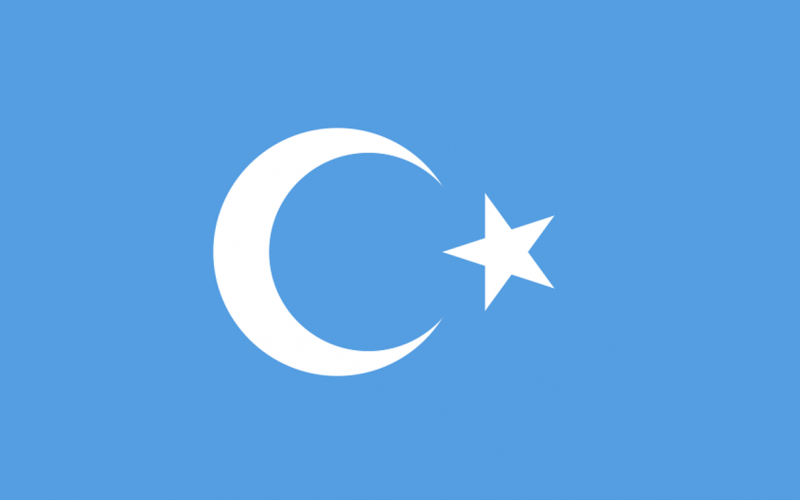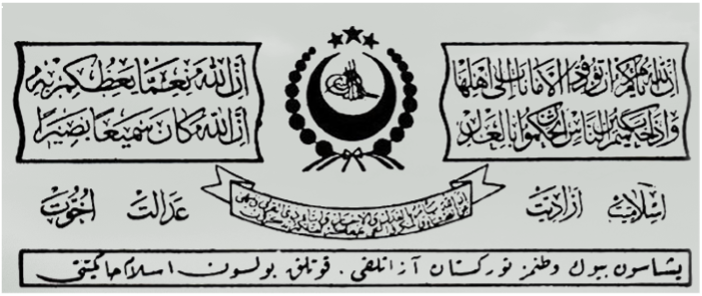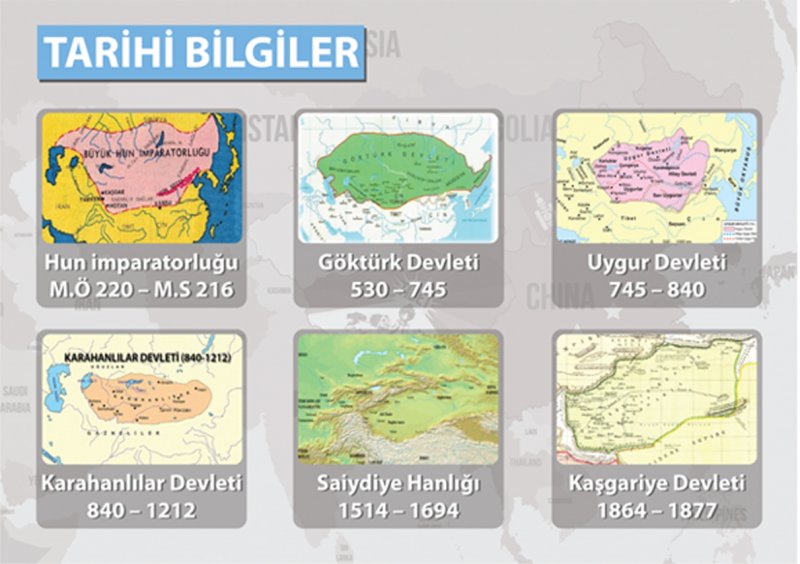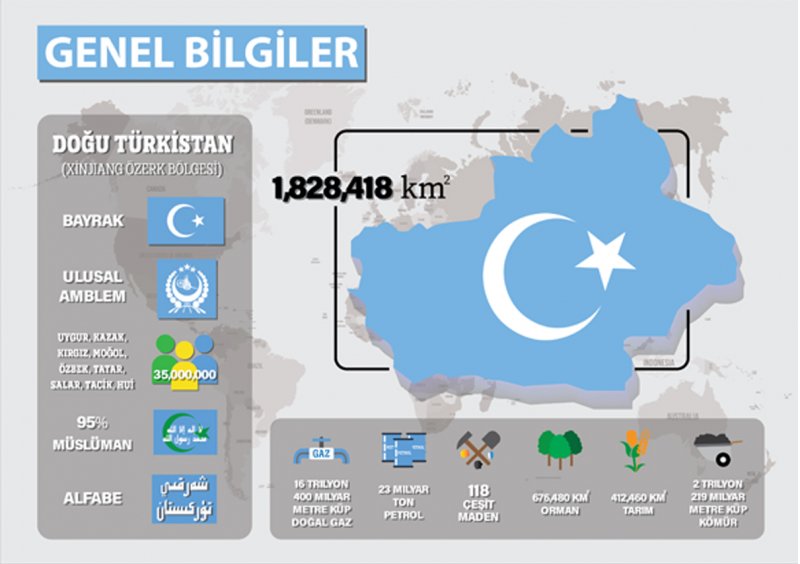
Flag of East Turkistan
The meaning of the flag of East Turkistan:

The flag of East Turkistan is a light blue flag with star and crescent. The crescent represents Islam, and the star represents the rightful owners of East Turkistan (Uyghur, Uzbek, Kazakh, etc.). The light blue color (#65B7FF) symbolizes freedom and independence.
East Turkistan Emblem

East Turkistan emblem consists of (1) Bismillah inscription, (2) a Crescent, (3) Three stars, and (4) 18 circles.
The Bismillah inscription in the middle of the crescent represents Islam, the belief of the people of East Turkistan.
The three stars on the emblem represent the Göktürk Khaganate, Uyghur Khanate, and Karakhanids established in East Turkistan along its historical timeline.
The 18 circles surrounding the crescent and basmalah represent national unity of the 18 tribes living in East Turkistan since time immemorial.
In the emblem of East Turkistan, the state, nation, and faith are clearly integrated.
History of East Turkistan

Until the middle of the 19th century, Turks living in East Turkistan geography established many states. Written sources state that the Hun, Ak Hun, Gokturk, and Uyghur states were established in East Turkistan, respectively, from the period before Christ until the period when the Turks accepted Islam en masse.
After the collapse of the Uyghur Khaganate in 840, the Uyghurs and the tribes under their rule migrated to two different regions, some of them founded the Gansu Uyghur Khanate (848-1036) in the south of the Great Wall of China, while the others established the Turkic tribes within the borders of East Turkistan and the Kochu Uyghur Khanate (843-1209).
The Yagma and Karluk tribes living in the East Turkistan region since the Huns period brought together other Turkic tribes and established the Karakhanids State (840-1212), which made Kashgar the capital.
The conversion of the Karakhanid ruler Sultan Satuk Buğra Khan to Islam in the middle of the 10th century led to the rapid spread of Islam in the Turkistan region and the conversion of the Turks to Islam en masse.
Afterward, the Genghis Empire, the Chagatai Khanate, and the Yarkent Khanate continued to dominate in East Turkistan. The Manchu empire, which fought the Jungars in the 18th century, first occupied the north of East Turkistan and then the whole territory of East Turkistan in 1759.
The people of East Turkistan resisted Chinese occupation time by time. In 1865, under the leadership of Yakup Han, they succeeded in expelling the Chinese forces from East Turkistan and established the Kashgar Emirate or also called Kashgarya. After the fall of Kashgarya, the struggle of East Turkistan people continued until the establishment of Islamic Republic of East Turkistan in Kashgar in 1933.
This legitimate republic fallen into Chinese grasp in February 1934 by military occupation led by Sheng Shicai, a chinese militant leader and supported by Stalin’s troops.
Sheng Shicai carried out massacres against the people of East Turkistan, especially the founders, scholars, and intellectuals of the Islamic Republic between 1937 and 1941.
The uprisings continued, and the Republic of East Turkistan was declared in Ghulja in November 1944. However, in 1949, East Turkistan was occupied once more by the CCP, and the occupation continues until now.
Reasons
East Turkistan, which has rich natural resources, is home to 78% of the mineral diversity in all of China. So much so that a total of 138 different mines have been identified in East Turkistan and chromium, salt, iron, stone cotton, manganese, copper, silicon, lead, diamond, gold, silver, and coal are obtained from actively operated mines. These mines in East Turkistan correspond to 85% of all mines in China. Since most of the mined minerals are not found in China, they are transferred to the interior of China.






